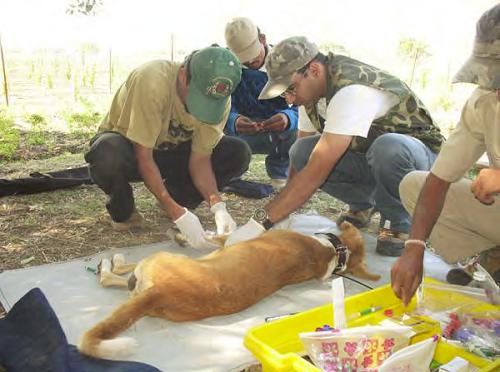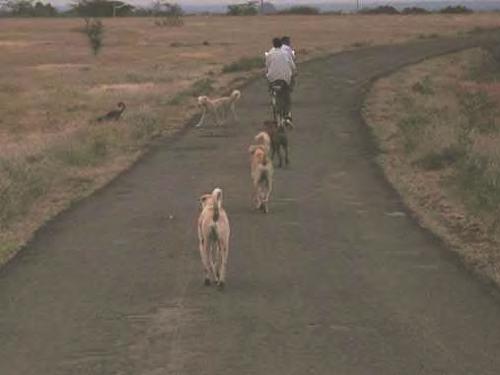Abi Tamim Vanak
This research examines risk of disease to wildlife from free-ranging domestic dogs around the Great Indian Bustard Sanctuary, India and possible spill-over risk for wildlife in India.

Dog tranquilise.
This research examines risk of disease spill-over from free-ranging domestic dogs to wildlife. Canids such as grey wolf, Indian fox, and golden jackal are susceptible to many diseases carried by dogs. Domestic dogs have been the proven or suspected reservoir of infectious diseases that have led to epidemics in a variety of wild carnivore species across the world. In several parts of the developing world, and particularly in India, dog populations in rural areas are large, often un-owned and free-ranging. Despite this, investigations of disease incidence and likelihood of spill-over to wild carnivores have not been extensively carried out in India or in most other parts of the world, and therefore risks to wildlife are largely unknown. As most protected areas in India are surrounded by habitation, the frequency and intensity of interactions between dogs and wild carnivores is likely to be high. Even in the absence of direct interactions, the ability of some pathogens to persist in the environment for long periods of time may be sufficient for disease transmission.

A pack of dogs heads off into the reserve from a village road.
We aim to sample owned, free-ranging and feral dogs from around a grassland sanctuary in central India for sero-prevalence of exposure to pathogens. The field work will involve capturing domestic dogs from three villages (Nanaj, Mardi and Akole-Katti) located on the boundaries of the Great Indian Bustard Sanctuary at Nanaj, India. With the permission of the owners and the assistance of a veterinarian we will restrain and collect blood and faecal samples from owned dogs. Serum samples from each animal will initially be tested for evidence of exposure to canine distemper virus and canine parvo-virus, using Immunocomb® lgM/lgG kits. Haematological parameters of the collected blood samples will be assessed in a lab for establishing baseline data. Serum will be stored for retrospective analysis of several pathogens of conservation (and human health) concern, including canine-parvovirus, canine-distemper virus, canine-coronavirus, canine-herpesvirus, canine-adenovirus, sarcoptic mange, heartworm disease, canine-equine influenza, and potentially, rabies virus. Endo-parasite load will be assessed from faecal analysis, and ecto-parasites will be collected and documented during capture of individuals. We aim to capture a minimum of 25 dogs from each of three villages (total = ca 75+ dogs) surrounding Nanaj.
Based on this data we may be able to ascertain the extent of exposure to diseases in wild populations by sampling those wild carnivores most at risk of infection. Furthermore we may be able to advise the Maharashtra State Forest Department authorities on whether or not it is necessary to implement large scale dog-population control measures, as is being currently considered. We will also educate villagers on responsible dog ownership, and provide them with information about vaccination programs for their pets.